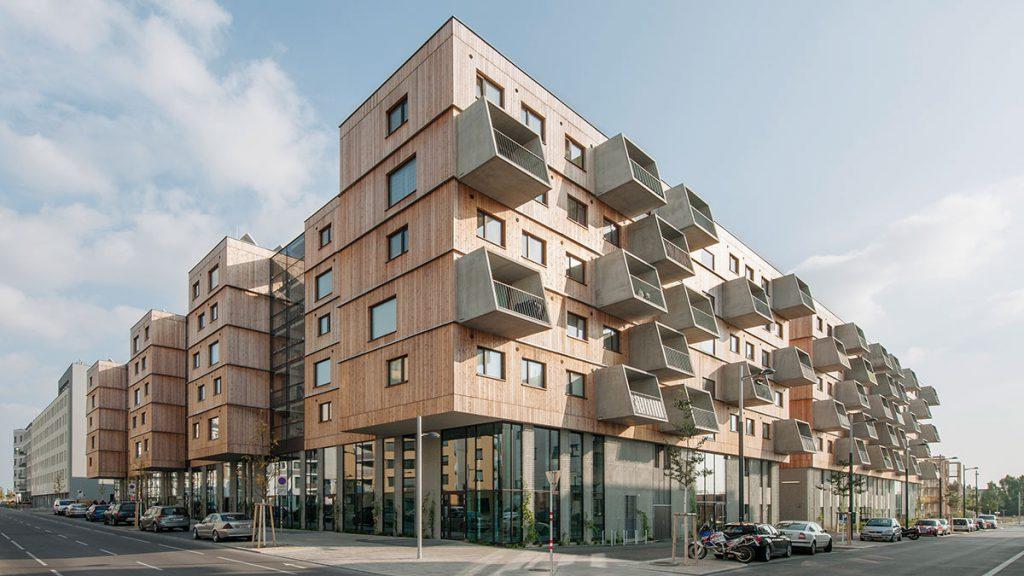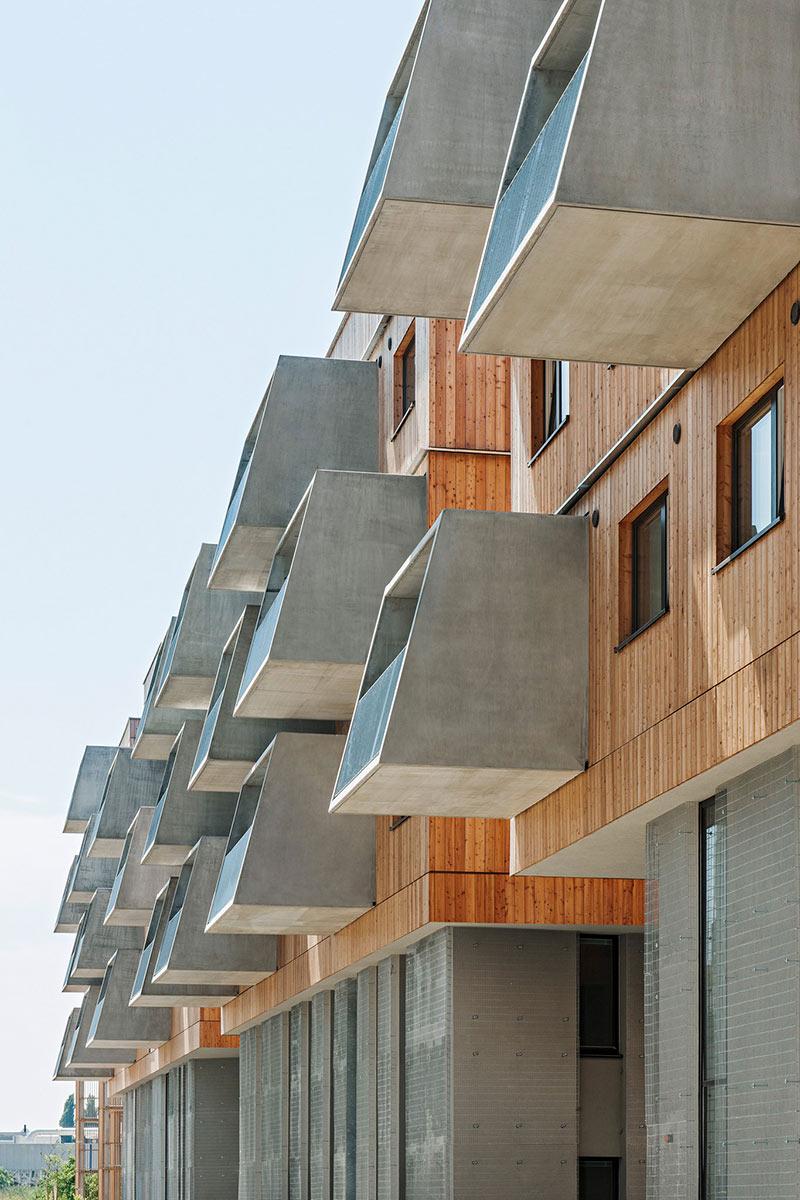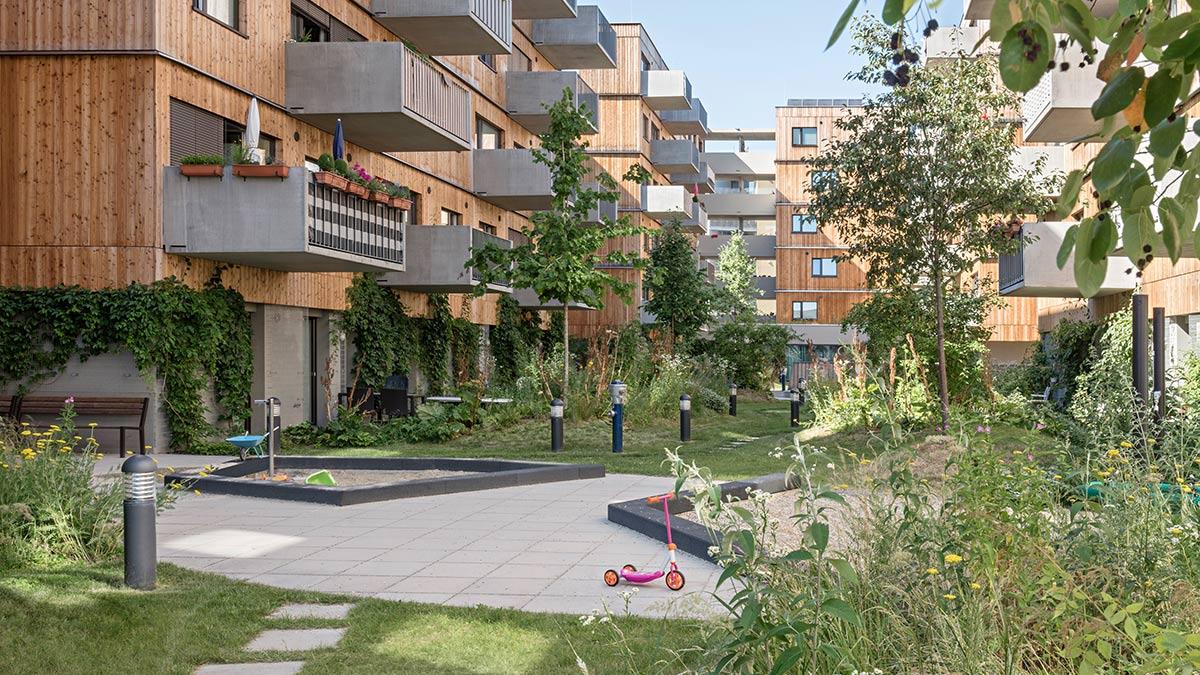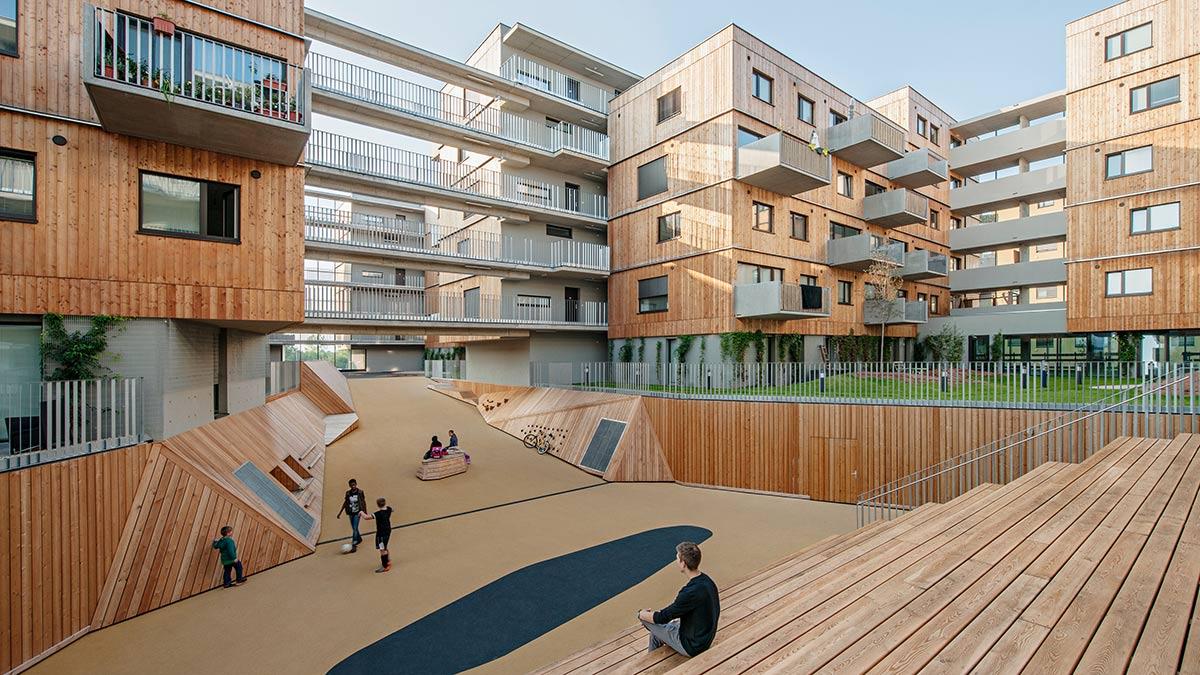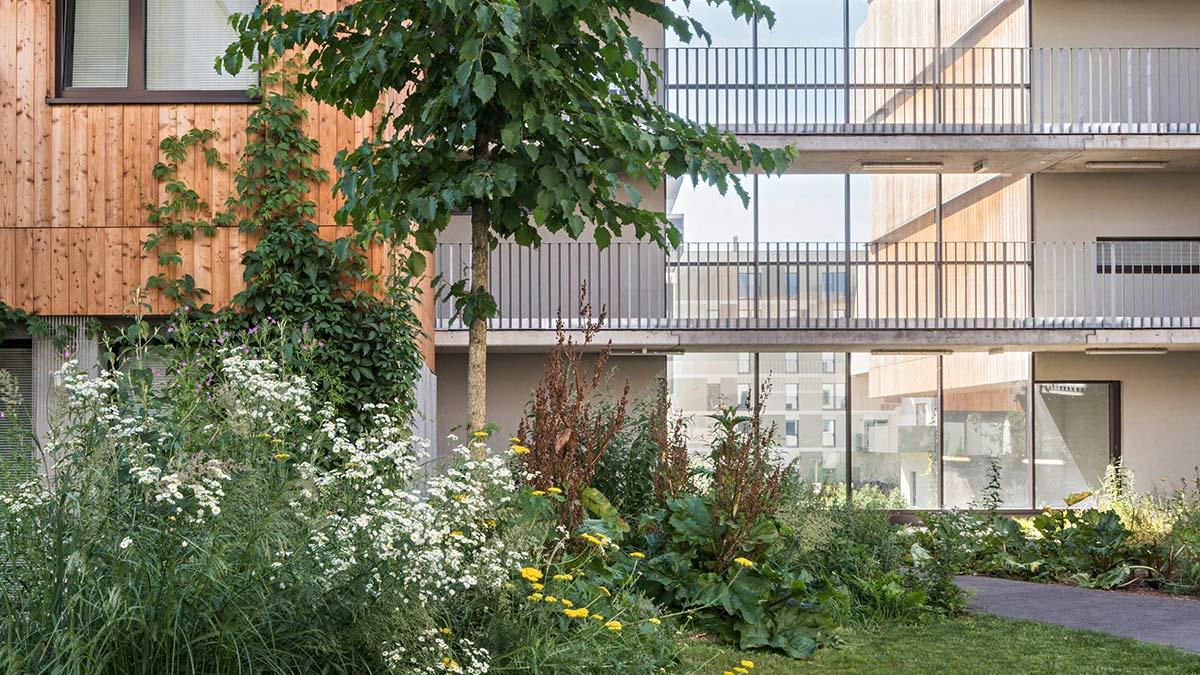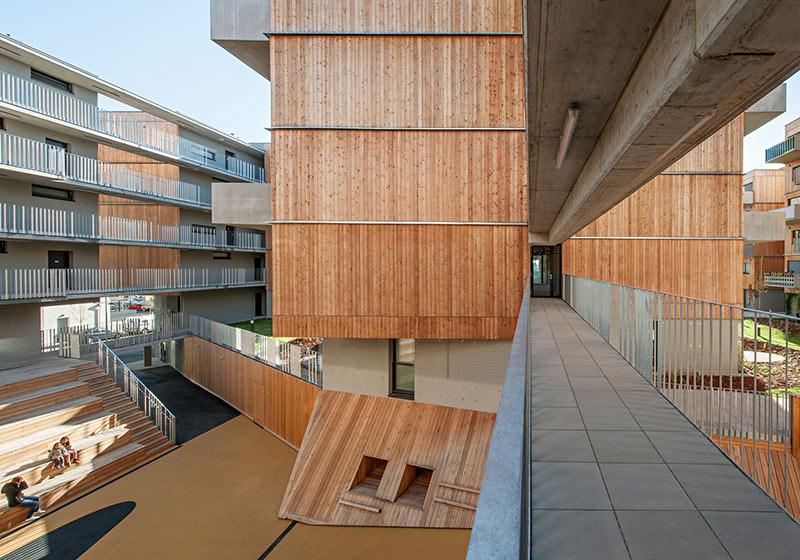Affordable living space made with timber
Climate change and social issues are closely intertwined, and climate-friendly timber construction is often still classed as a luxury segment. The timber housing project Seestadt Aspern in Vienna is an award-winning example of social housing construction, and also an Instagram hotspot.
The climate crisis and global warming are making life progressively more difficult in our urban spaces. Higher levels of soil sealing – measured in the amount of asphalt, concrete, steel and glass used – are known to create larger urban heat islands. And tropical nights are now frequent in many large central European cities, with the temperature remaining above 20 °C. The ever more problematic climate in cities also reveals a social divide, as illuminated by the following questions: Who lives in the densely built-up areas? Who has access to green space and areas where people can rest and recuperate?
The city of Vienna has historically played a pioneering role in municipal housing construction. And recent years have seen the Danube metropolis increasingly show its support for wood as a climate-friendly building material. In eastern Austria, a region traditionally characterized by minerals, individual building sites are starting to be dedicated to large timber developments. One project – which has won multiple awards – has been developed on building site D12 in the young Seestadt Aspern quarter, commissioned by non-profit building cooperative EBG.
Social housing with added value
This area of urban expansion is one of the largest in Europe, and includes the 84-metre tower HoHo Wien which is literally a lighthouse project of modern timber construction. The D12 housing complex is located not far away, in the south-eastern part of this new urban area. The Viennese architecture firm responsible for the project, Querkraft, describes it as “social housing with added value”. Querkraft teamed up with architects Berger+Parkkinen to design the sustainable multi-storey residential construction.
Instead of the perimeter development style commonly used, the team of architects opted for an open structure with seven buildings in three rows, linked to each other via walkways. “A varied spatial experience is created by the sequence of light-flooded stairwells, interior corridors and open walkways with docked community terraces.” The aim of these public spaces and pathways is to promote a sense of community and communication among the residents.
Wood is one of the most intelligent building materials imaginable – renewable, decomposable when recycled – it also has haptic qualities.
Querkraft, architects
The characteristic “comb” structure has even more advantages, according to the architects: “The serial, linear basic structure offers great flexibility in the arrangement of the most diverse types of flats and thus enables a good mix of residents.”
Letting off steam in the Canyon
Residents can find naturalistic recreational spaces in the lush green courtyards, which also help to improve the urban microclimate. The private, prefabricated concrete balconies deliberately extend into the centre of the courtyard and overlook the organic landscape featuring hilly lawns, trees and bushes. Pathways are limited, allowing nature and residents to find peace and quiet here.
The “active zone” in this housing complex is found in the Canyon, an award-winning meeting place and playground for children and teens. Slanting walls, steps for seating, reclining areas and alcoves with wooden panelling are on offer in this activity area. Its space is ideal for children of all ages to play on their bikes and skateboards.
Austria’s largest wooden building envelope
The complex features a total of 213 flats and eight shops built according to a hybrid timber-concrete design. On a reinforced concrete skeleton with minimized supporting structure, highly insulated timber frame components are used. These were entirely prefabricated using local wood at the Weissenseer Compact Building Factory in Carinthia, as were the walls of the flats and the partition walls, including prepared installations. According to the Carinthia-based modular construction specialist, the housing complex in Aspern is Austria’s largest wooden building envelope.
This resource-saving, timber hybrid construction method not only protects the environment and surroundings by shortening the construction time but also creates “lasting flexibility in the floor plan arrangement”. Wood is visible as a building material on the façades in the form of larch panelling. “Wood is one of the most intelligent building materials imaginable – renewable, decomposable when recycled – it also has haptic qualities. In contrast to fully insulated façades, wood is a material that consciously ages, turns grey and also creates a sense of identity in an urban context,” the architects explain.
Research into renewable energies
As far as sustainability of the building operation is concerned, the complex is part of a large-scale research project on renewable energies in connection with intelligent control systems. A combination of ventilation system with heat recovery, geothermal energy, photovoltaics, solar thermal energy and a heat pump provides the site with energy. The data supplied from this comprehensive monitoring project should deliver valuable information.
The fact that the wooden residential building in Seestadt Aspern has become a popular Instagram hotspot is a sign of its success. An abundance of wood and the cleverly conceived outdoor spaces for all ages create a high level of identification with the architecture.
To sum up, the architects say: “With its varied development situation and the ecological choice of materials for the façade, the D12 residential complex is something special in Seestadt Aspern.”
Text: Gertraud Gerst
Translation: Rosemary Bridger-Lippe
Photos: Hertha Hurnaus, Berger+Parkkinen Architekten, Querkraft Architekten
